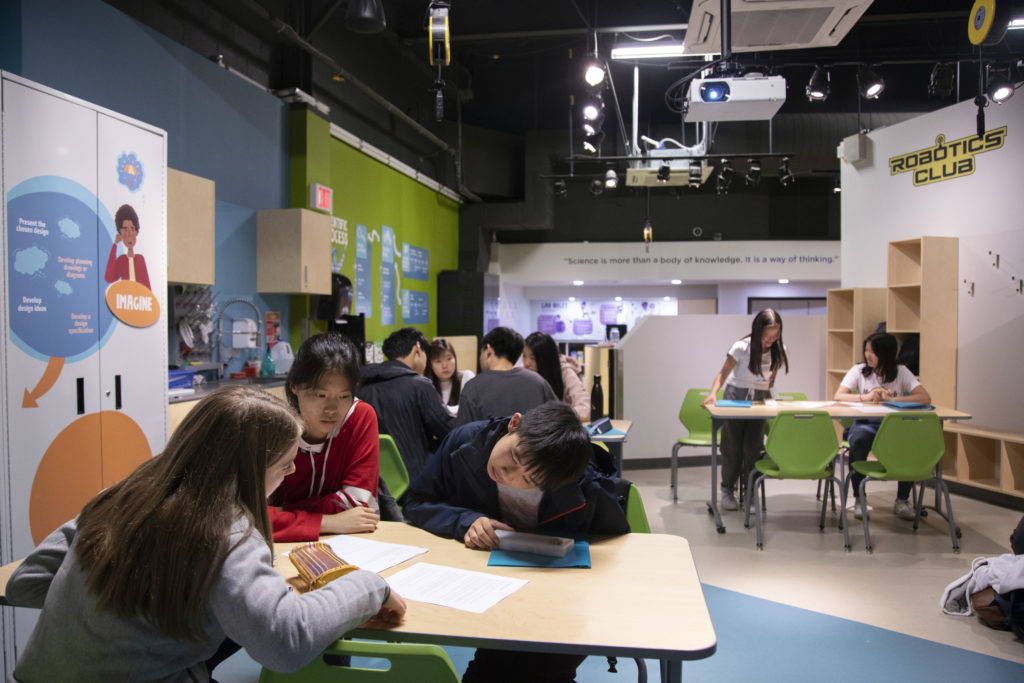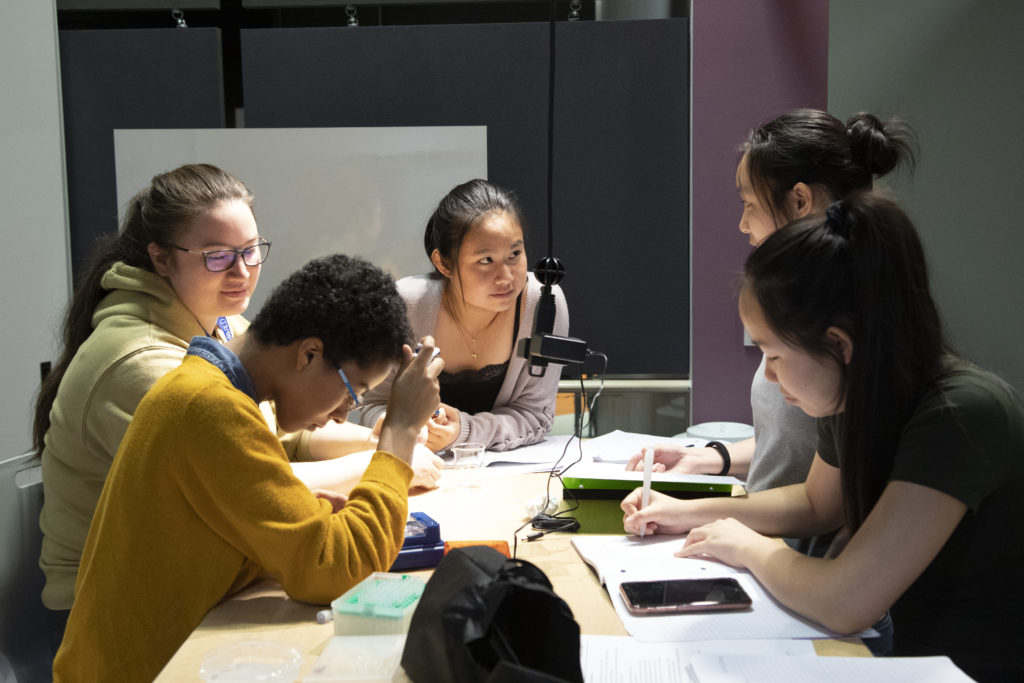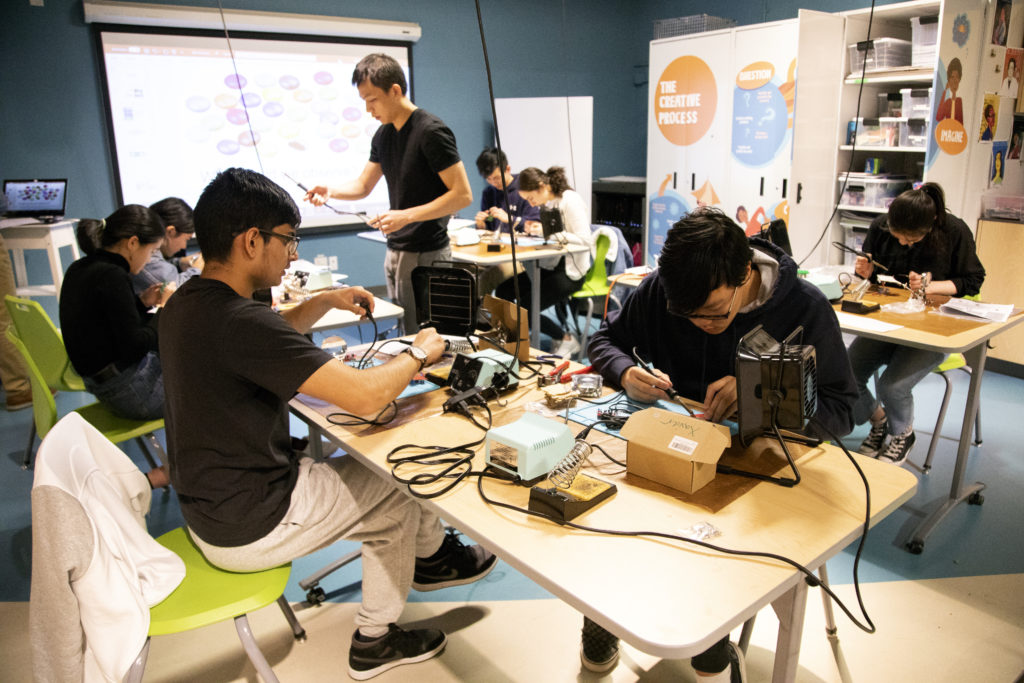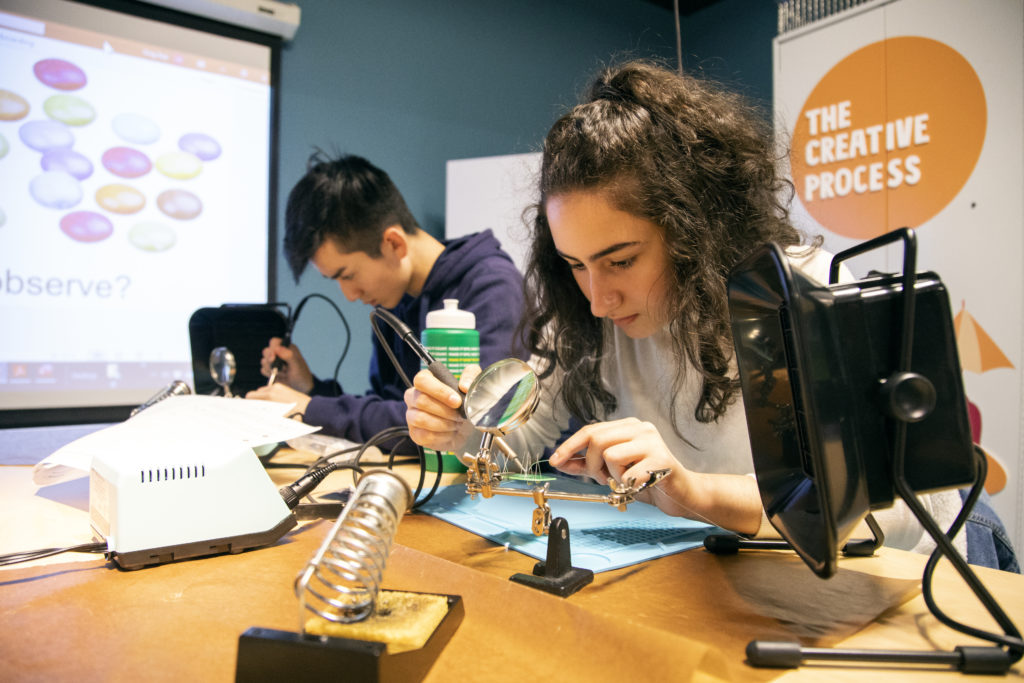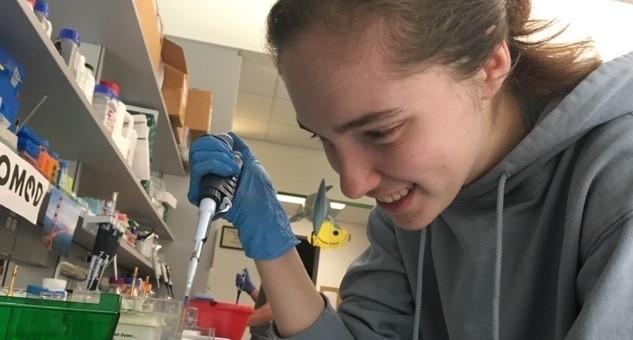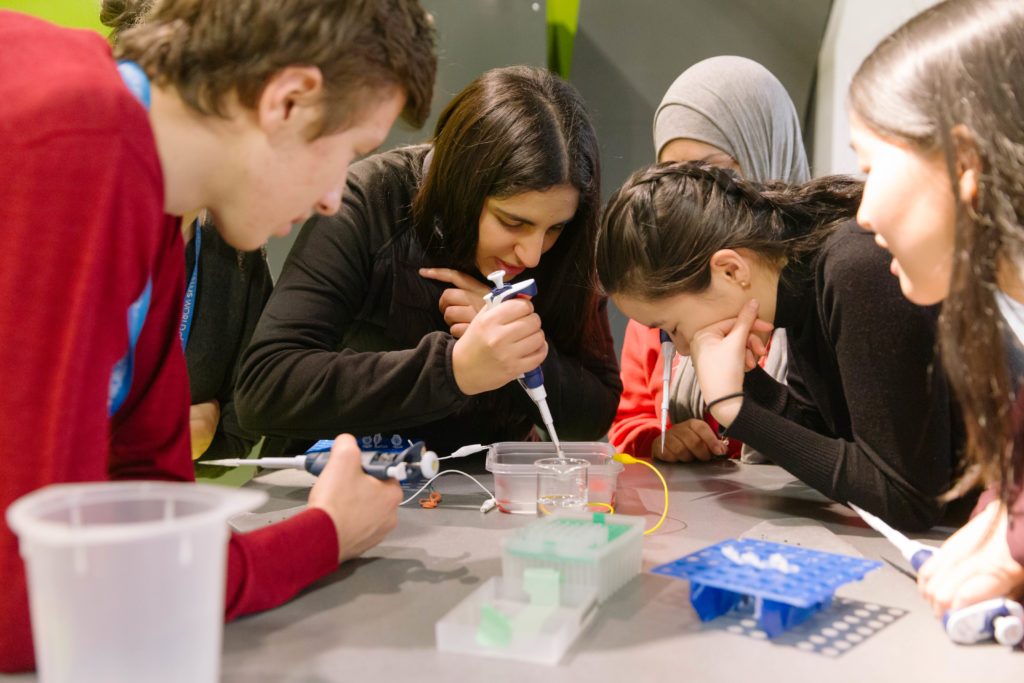Here, the Future Science Leaders assemble, filtering into the Launchpad and chatting excitedly. I catch snippets of their conversations spilling over one another. I hear about parabolic dishes and electric generators. University applications and science fairs. Running code and module errors. Agar plates and solar power. Forest fire simulations and magnetic flashlights.
These teens are in the second year of the program and are completing major projects—either Research or Engineering—on subjects important to them. I’ve come to hear about their STEAM journeys: how the skills and topics they learned at the beginning of the program have led them where they are now.
One by one, they tell me about their projects.
The Researchers—Asking Questions
Ellie is testing the efficacy of nighttime teas. Emily is creating sustainable dye using food waste. Sean wants to find out if micro-plastics threaten the bacteria in our gut. And then there’s Yumai, who just might just have the biggest question of all.
“I want to know how everything got here,” she says, “and I want to know how everything works.”
To do that, she is investigating the buoyancy of arks. When Yumai became a Future Science Leader, she found a 2013 scientific paper that piqued her interest. Scientists had found that, using dimensions from an ancient text, they could create a boat that would carry 70,000 animals. Yumai wanted to dig into that research herself, and is now working with different materials and angles for the hull, seeing if she can build a vessel that floats.
“I never thought I would complete a physics project. I thought I would go into biology,” she tells me. But, after Future Science Leaders provided her the opportunity to engage with multiple physicists from vastly different fields, Yumai realized: “This is something I can do.”
“One of the very first skills I learned through Future Science Leaders was how to read a scientific paper, which is just the pure material of what a scientist did. It abridges nothing; it’s just data and procedures. Being able to read a scientific paper is how you figure something out for yourself.”

